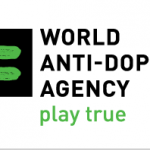Montreal, Aug 15, 2015: On 1 August 2015 ARD German television aired a new program, following the original program released on 3 December 2014, with new documentation and other evidence alleging misconduct on the part of the International Association of Athletics Federations (IAAF) in relation to the follow-up of suspicious indications of doping in the period 2001 – 2012. The program also produced evidence of what appeared to be extensive doping among Kenyan athletes, primarily in distance running events.
What appeared to be a database of several thousands of tests carried out at the request of IAAF was referred to, as well as a report by Australian scientists Michael Ashenden and Robin Parisotto.
Many articles then appeared shortly thereafter, primarily in the British press, purporting to rely on information contained in the database. It is not yet known who released the database, which contained personal medical information on the athletes involved. The IAAF itself did not release the information and WADA confirmed that the leak did not come from WADA and that the data contained in the Anti-Doping Administration & Management System (ADAMS) had not been compromised.
The President of WADA referred the matter to the IC as an extension of its original mandate arising out of the initial documentary shown on 3 December 2014. The Terms of Reference of the IC have been amended accordingly. The three members of the IC: Richard W. Pound, Prof. Richard H. McLaren and Günter Younger have agreed to continue in office.
The IC has resolved to try to release its report on the original mandate as planned prior to the most recent revelations. It remains to be seen whether the allegations contained in the new documentary may result in findings that will support, or contradict, those derived from the original investigation by the IC. The IAAF has indicated that it will cooperate entirely with the IC in its investigation of this matter. The IC has already started its work and experts were at the IAAF headquarters yesterday to start analysing the database.
Several media releases have been issued and statements made that have tended to confuse the situation, rather than to make clear exactly what can be relied upon as evidence of doping and what cannot. By way of summary, and based on the experts’ initial analyses, until the Athlete Biological Passport (ABP) was introduced in 2009, none of the test results contained in the database could be used as the basis for a definitive finding that doping had occurred. At best, they could only be used as indicators of the need for targeted future testing of athletes having abnormal or unusual values.
The IC considers this to be an essential point of focus, which bears repeating in the circumstances: no test data derived from the IAAF database prior to the adoption of the ABP in 2009 can be considered to be proof of doping. It would be reckless, if not libellous, to make such an allegation. The reported values may be suspicious and lead to targeted testing of the athletes involved, but nothing more could be done with the information.
The extended mandate will be dealt with as expeditiously as possible, despite the complications arising from the forthcoming World Championships to be held in Beijing in late August 2015.
Investigatory work has already started and will be performed under the direction of the IC by WADA staff familiar with analytical results, testing and the ABP. The investigative methodology developed by the IC (and accepted as appropriate by the experts and by IAAF) for this purpose will include the following elements:
1. Obtain a copy of the leaked database and confirmation by IAAF that it is – or was – all or part of an IAAF database.
2. Obtain a copy of the report prepared by the Australian scientists.
3. Obtain from WADA the precise dates of the progress toward adoption of the ABP and the applicable protocols for bringing anti-doping rule violation charges based on the ABP, as well as any statements by WADA (or others) regarding inappropriateness of the use of suspicious or abnormal test results as proof of doping.
4. Verify what portions of the IAAF database have been recorded in ADAMS.
5. Identify suspicious test results that should have led to targeted testing.
6. Verify the actions of IAAF in dealing with such suspicious test results, including the timeliness and frequency of any subsequent actions, by examining the IAAF records on a case-by-case basis, and report accordingly to the IC.
7. Provide timelines established by the foregoing verifications [e.g., date of test, date of receipt of results, date of decision to target test, date(s) of targeted testing, date(s) results were received, date(s) of decision to proceed with sanctioning process, date(s) of process and decision(s) to sanction, date(s) of any provisional sanction].
8. Verify the actions of WADA regarding IAAF follow-up on suspicious values in the test results, while bearing in mind that the relevant ADO with full responsibility is the IAAF, not WADA, which has a primary role as monitor, rather than principal in matters of doping in Athletics, and report accordingly to the IC.
9. Determine to what extent, if any, were IAAF actions the result of WADA’s actions. Determine what internal processes were in place at WADA to coordinate follow-up with IAAF and other ADOs in relation to suspicious test results?
10. Identify any athletes having abnormal values in test results who were later discovered to have doped as a result of targeted testing, with timelines and outcomes.
11. Draw attention to any mis-statements made in media releases and other statements.
12. Make appropriate findings and recommendations. —- WADA


Leave a Reply
You must be logged in to post a comment.